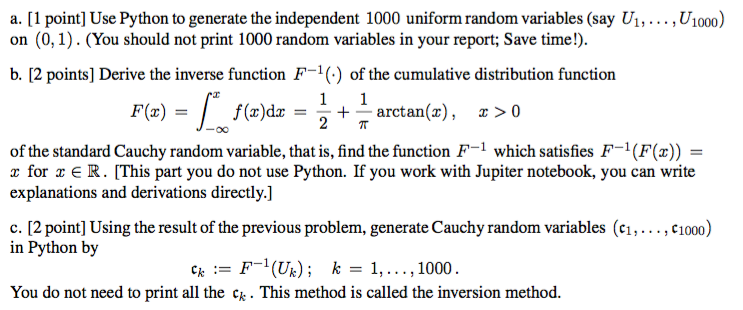Answered step by step
Verified Expert Solution
Question
1 Approved Answer
Answer to a) n = 1000 x = np.random.uniform(0, 1, n) answer to b) y = cot(-pi*x) NEED HELP WITH C a. [1 point] Use
Answer to a)
n = 1000 x = np.random.uniform(0, 1, n)
answer to b)
y = cot(-pi*x)
NEED HELP WITH C

a. [1 point] Use Python to generate the independent 1000 uniform random variables (say U1,..., U1000) on (0,1). (You should not print 1000 random variables in your report; Save time!). b. [2 points] Derive the inverse function F-) of the cumulative distribution function 3 F(x) f(z)dz= -+-arctan(z), z > 0 of the standard Cauchy random variable, that is, find the function F-1 which satisfies F-1 (F(x)) r for ER. [This part you do not use Python. If you work with Jupiter notebook, you can write explanations and derivations directly.] c Poinusingthe re preous problemgerateCahymriabes(..) ck :=F-1(U); in Python by k=1, , 1000 You do not need to print all the This method is called the inversion method
Step by Step Solution
There are 3 Steps involved in it
Step: 1

Get Instant Access to Expert-Tailored Solutions
See step-by-step solutions with expert insights and AI powered tools for academic success
Step: 2

Step: 3

Ace Your Homework with AI
Get the answers you need in no time with our AI-driven, step-by-step assistance
Get Started


